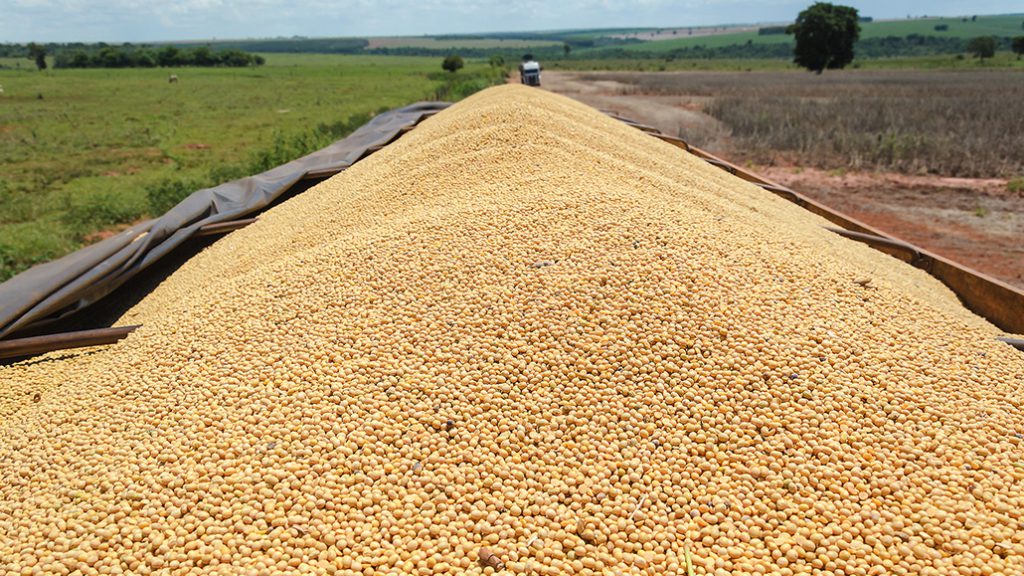Market uncertainty
U.S. - CHINA SOYBEAN TRADE

AS U.S. TRADE policy has grown increasingly combative, concern has grown about the export outlook for a number of commodities, especially soybeans.
Economists at the University of Illinois tracking the escalation have also tracked a parallel decline in soybean prices: from $10.34 per bushel in March, Illinois soybean prices dropped to a low of $7.84 by mid-July, as the U.S. Department of Agriculture (USDA) reduced its forecast of U.S. soybean exports by 6.8 million metric tonnes (mmt) (250 million bushels).
About one out of every three bushels of the U.S. crop is normally exported, and 60% of that goes to China, the world’s largest buyer of soybeans.
“How much of the price declines is due to trade negotiation is an open question, but it did play a large role in those price declines,” the Illinois team reported. ”With these price declines, income prospects for 2018 have dimmed.”
RECORD CROP
Now the prospect of a record 2018 U.S. soybean crop is compounding the downward pressure on prices.
In mid-August, USDA’s World Agricultural Supply and Demand Estimates (WASDE) increased its projection for U.S. carryover stocks in 2018/19 by 5.6 mmt (206 million bushels (mbu)) and reduced its estimated midpoint farmgate price to $8.90 per bushel.
Per bushel soybean prices have declined in six of the last seven years, dropping from $14.40 per bushel in 2012/13 to a projected $9.30 this year.
With dropping prices, more growers will find their production costs outstripping their income. For example, Iowa production costs for Roundup Ready soybeans yielding 55 bushels per acre are estimated at $9.39 per bushel this year.
What may be just as critical as the current price declines is “the long run nature of economic responses to trade disputes,” according to Illinois’ farmdoc daily newsletter. “Lessons from the 1980 USSR trade embargo suggest trade flows could be impacted over many years.”
Canadian commodity analyst Philip Shaw takes a similar view, calling the U.S.-China dispute a “self-inflicted disaster” and “an invitation for Brazil and Argentina to increase soybean production.”
“You had the biggest soybean market in the world until you put a 25% tariff on it. I find it difficult to believe they’re going to come back with open arms,” he says.
Forbes reports that China has built up its soybean stocks in recent months and will favour Brazilian soybeans when it resumes purchases. China is still expected to source some soybeans from the U.S., but only as a last resort after exhausting other options.
NEW MARKETS
The Trump administration claims the European Union has promised to buy more U.S. soybeans, but as a mature market, the EU does not have the capacity to expand and replace all the lost Chinese sales. For example, as of August 2, the EU had imported 5.1 mmt (187 mbu) of U.S. soybeans in the 2017/18 marketing year, while China had imported 27.6 mmt (1 billion bushels).
Canada doesn’t have the production to fill a significant share of China’s needs, but Canadian farmers may find some marketing opportunities in specialized niche markets such as organic soybeans, Shaw says.
Meanwhile, Reuters reports that Brazilian farmers have stepped up soybean sales for both the current season and their next crop. Sales for the 2017/18 year have reached 84% of production (compared to 74% last year).
In the U.S., news coverage of the issue has reached well beyond the usual farm press outlets, even to the Iowa State Fair, where the Des Moines Register reported that trade wars were getting as much discussion as crop conditions or the weather.
Concerns there included not only soybeans, but also pork and milk exports. “We’ve built an industry on those foreign market opportunities. We rely on those exports,” said Gregg Hora, the farmer-president of the Iowa Pork Producers Association.
GOVERNMENT AID
The Trump administration has promised $12 billion in federal aid, part of which will go to producers of soybeans, wheat, corn, cotton, pork, and dairy. Details on how the funds would be allocated were not available as of press time, but farmers expect this to be a one-time aid, and many emphasize that it will not take the place of established trade relations.
Spokesmen and farmers have been actively speaking out for trade through traditional and social media, delivering a consistent message.
The American Soybean Association, for example, expressed disappointment and concern that trade tensions continue to ratchet up and that its repeated requests to the administration for a non-tariff solution that does not threaten market stability has not been put forward.
To view monthly WASDE updates, go to https://www.usda.gov/oce/commodity/wasde/. •


























